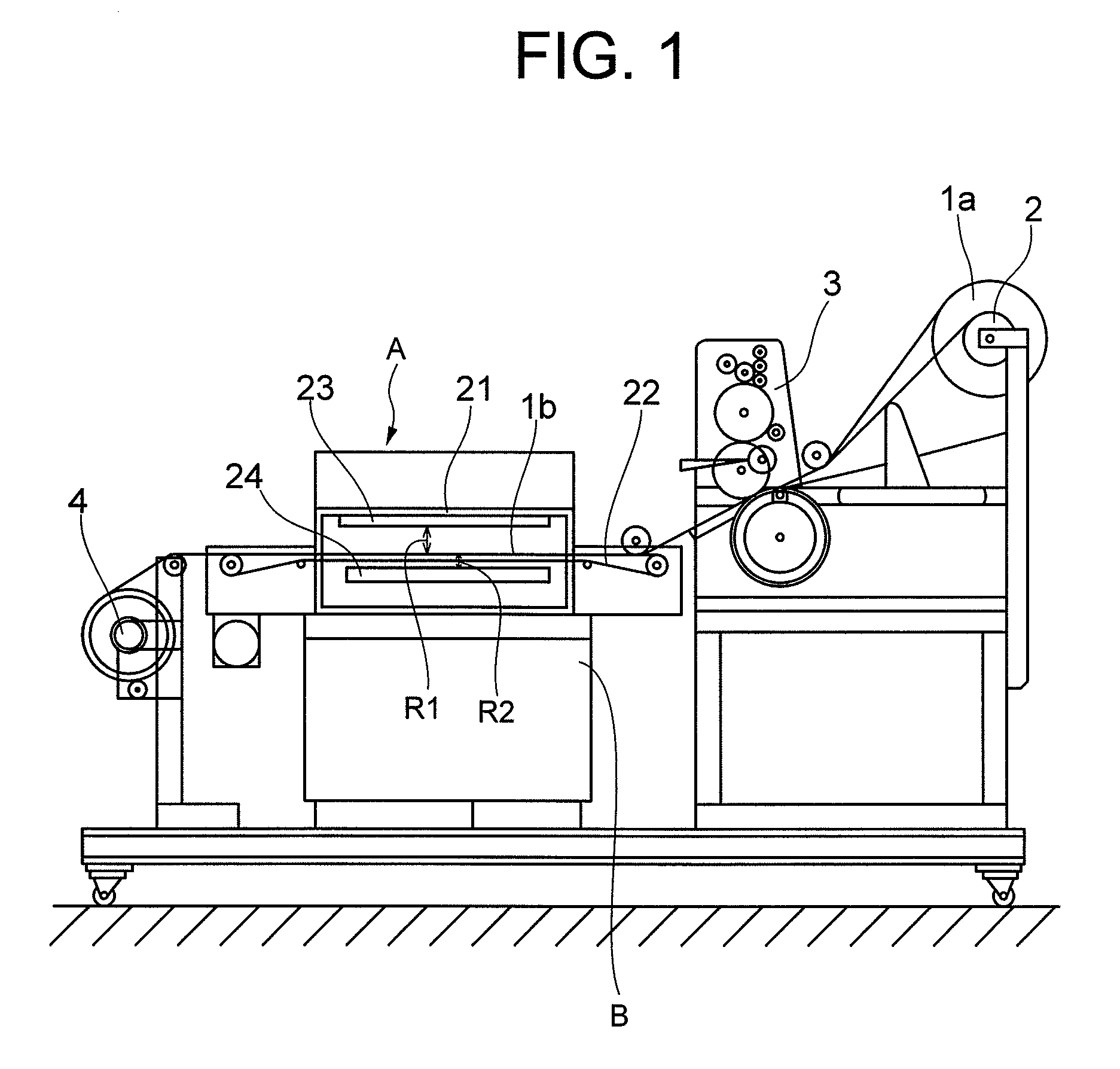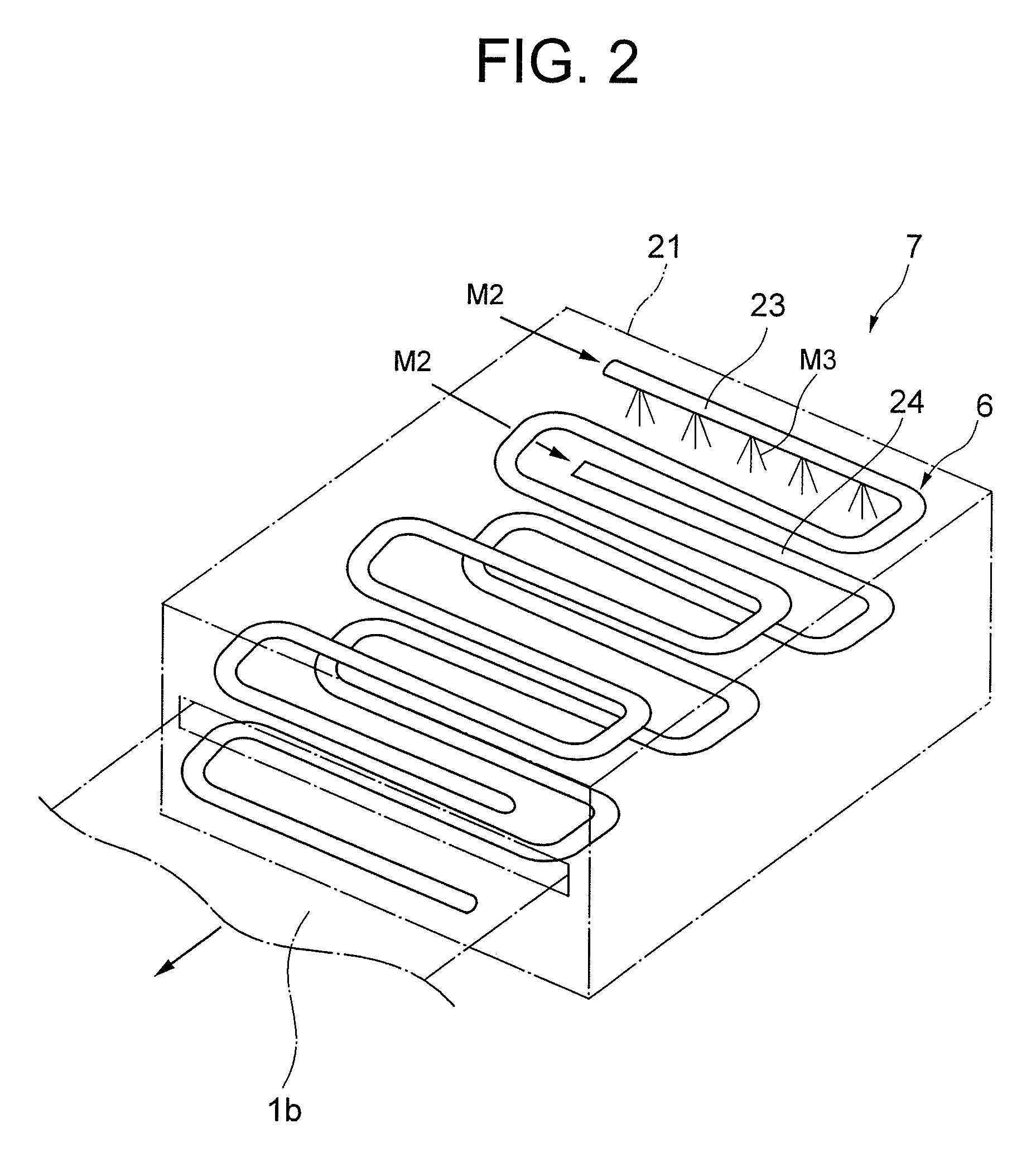Method of drying printed material and apparatus therefor
a printing material and drying method technology, applied in the direction of drying machines with progressive movements, lighting and heating apparatus, furniture, etc., can solve the problems of inability to reuse residual ink, unsuitable printing applied on print sides of non-absorbent plastics, and inability to dry printing ink, so as to avoid adhesion of printed materials to each other securely and easily
- Summary
- Abstract
- Description
- Claims
- Application Information
AI Technical Summary
Benefits of technology
Problems solved by technology
Method used
Image
Examples
Embodiment Construction
[0024]Hereinafter, embodiments of the present invention will be described in detail by referring to the drawings.
[0025]FIG. 1 shows a printing device to which a printed material drying apparatus according to the embodiment of the present invention is applied. The printing device shown in FIG. 1 is a device which prints on a continuous rolled paper, and it is structured to: hold a printing paper 1a to a feeding roller 2; perform printing on a print side of the printing paper 1a fed out from the teeding roller 2 at a printing section 3; let already printed paper 1b go through the printed material drying apparatus A according to the embodiment of the present invention; and takes up dry-processed paper 1 onto a take-up roller 4.
[0026]As shown in FIG. 1, the printed material drying apparatus A according to the embodiment of the present invention is an apparatus which: accepts the printed paper 1b printed by the printing section 3 into inside a drying chamber 21; dries the ink on the prin...
PUM
 Login to View More
Login to View More Abstract
Description
Claims
Application Information
 Login to View More
Login to View More - R&D
- Intellectual Property
- Life Sciences
- Materials
- Tech Scout
- Unparalleled Data Quality
- Higher Quality Content
- 60% Fewer Hallucinations
Browse by: Latest US Patents, China's latest patents, Technical Efficacy Thesaurus, Application Domain, Technology Topic, Popular Technical Reports.
© 2025 PatSnap. All rights reserved.Legal|Privacy policy|Modern Slavery Act Transparency Statement|Sitemap|About US| Contact US: help@patsnap.com



